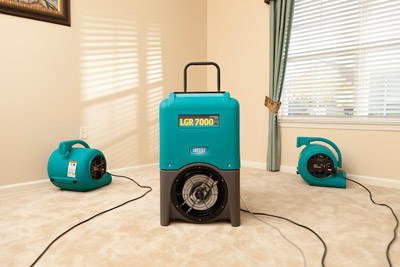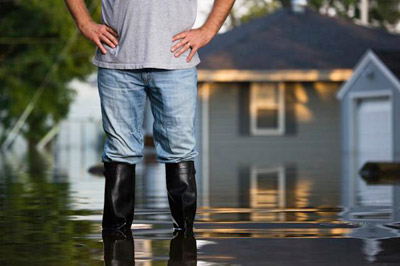Frequently Asked Questions about Water Damage Call Now! 817-267-5555

Structural Drying
Q. How long will it take my property to dry?
Q. How do I know my property is completely dry?
Q. Can I speed up drying by turning up the heat?
Q. My wood floors are wet and warping. Do they have to be replaced?
Q. What do I do if my furniture is wet too?
Q. Do I need to move out of my property during this process?
Q. Should everything be removed prior to restoration?
Q. My ceilings are wet. What needs to be done?
Q. Should I open windows to speed up drying?
Q. Can I walk on the area during the drying process?
Carpet and Floor Coverings
Q. Can my carpet be restored or will it have to be replaced?
Q. What causes loss of adhesion
Q. Why did the technician leave wet carpet on my stairs?
Q. How will you match my carpet pad?
Q. What will you do with my area rugs?
Equipment
Q. Why are air movers and dehumidifiers used?
Q. Who is responsible for monitoring the drying equipment?
Q. What will it cost to run the equipment?
Sewage
Q. What about sewage contamination?
Sewage Contamination
Q. Why does my specialty floor need to be removed?
Payment
Q. Who is responsible for paying for the service?
Structural Drying
Q. How long will it take my property to dry?
A. The length of time necessary to dryout a building depends on a varies according to a number of factors that include the extent of the damage, how long the area was exposed to water, the affected materials, where the damage occured, and even the climate and weather. With thorough water extraction, dry-out, dehumidification, and regular moisture monitoring, we ensure that your property is truly dry.
Q. How do I know my property is completely dry?
A. Carpet or other external surfaces may seem dry to the touch, but they can mask excess moisture in sub-floors or inside walls. Special instruments allow us to determine the actual moisture levels.
Q. Can I speed up drying by turning up the heat?
A. That depends on the conditions. With your permission, we will set the temperature to the optimal level to assist in drying the affected area. Please leave the system running at this level for the most effective drying conditions.
Q. My wood floors are wet and warping. Do they have to be replaced?
A. As part of the drying process, we will assess the condition of your wood flooring. With special equipment for drying and dehumidification, we are able to create the optimal environment for carefully drying wood floors and returning them to their original shape. Depending on the specific material in question, properly drying some wood floor can take three weeks or more. If you have filed an insurance claim, work with your adjuster to determine whether the flooring should be restored or replaced.
Q. What do I do if my furniture is wet too?
A. Depending on the level of damage and how each item is made, your furniture may be able to be restored. Dry the furniture thoroughly so you can see what condition the piece is in prior to determining if restoration is possible. We document any pieces that cannot be saved and file the appropriate paperwork. We also offer extensive professional furniture restoration services and work with agents and adjuster on claims involving damaged furniture.
Q. Do I need to move out of my property during this process?
A. If you file a claim with your insurance, they may offer some coverage for living expenses during extensive restoration. The decision of where to stay for the duration of the restoration is ultimately yours. We suggest taking the following concerns into consideration: Safety is the biggest concern. The equipment used for dryout and dehumidification is as safe for children as possible, but it is up to you to ensure that children and pets stay away from it. If there is ongoing work, it is also important for both safety and the efficiency of the work that children do not disturb the work site. Another consideration is the noise and drafts caused by the air movers and dehumifying equipment. If this will disturb you, you may want to find someplace to stay for a few days.
Q. What’s that smell?
A. It is not unusual to smell odors during the drying process. Increased heat and humidity can also lead to increased odors that may be coming from the drying building materials, or dormant spill and accident areas. Do not confuse these normal odors for the odor of mold. As the drying process continues and humidity levels drop, you’ll notice these odors disappearing on their own. Deodorizers are often used to minimize these effects as well.
Q. Should everything be removed prior to restoration?
A. Usually not. If anything does need to be moved, we would give you advance warning.
Q. My ceilings are wet. What needs to be done?
A. Our technicians will evaluate moisture content, determine the severity of the damage and may have to remove some of your ceiling for ventilation. Wet insulation can also be a hazard and may need to be removed.
Q. Should I open windows to speed up drying?
A. This depends greatly on the current weather. Talk with the technician to determine what is recommended given the state of the damage and the weather.
Q. Can I walk on the area during the drying process?
A. We highly recommend walking in the affected area as little as possible to avoid causing additional damage. Also, wear shoes at all times for your safety.
Carpet and Floor Coverings
Q. Can my carpet be restored or will it have to be replaced?
A. A few reasons your carpet may not be salvageable:
Q. What is delamination?
A. Delamination occurs when the backing separates from the carpet fiber.
Q. What causes loss of adhesion
A. This may be caused by prolonged exposure to water or the age of the carpet.
Q. Why did the technician leave wet carpet on my stairs?
A. Carpet on the stairs is generally not removed for safety reasons. Exposed tack strip or staples, especially on steps is dangerous. However, there are situations where removing carpet from steps is necessary to prevent damage to hardwood steps or in the case of sewage contamination. Removing tack strip is not advised, as this may damage the hardwood sub-floor. Extreme caution must be used whenever tack strip is exposed or when the carpeted stairs are damp. If carpet left on the stairs is unsalvageable, it will be removed when new carpet is installed.
Q. How will you match my carpet pad?
A. A sample of your pad is brought to the office for a match. When available, an identical pad will be used. When your original pad is not available, we will provide a pad of the same quality, thickness, and density. Similar pad may differ in color based upon the time it was manufactured.
Q. What will you do with my area rugs?
A. Rugs are taken to our warehouse for special care. They need to be dried carefully to minimize bleeding of colors and discoloration. Your rugs will be dried, cleaned, and returned.
Equipment
Q. Why are air movers and dehumidifiers used?
A. When water damage has occurred, water can be absorbed into the drywall (sheetrock), baseboards, sub-flooring, etc. Drying these surfaces requires high-velocity air movers to accelerate the release of absorbed water into the air. Dehumidifiers are necessary for removing this excess moisture to help protect property and create conditions for efficient drying. Please do not turn off or move drying equipment without first calling ServiceMaster Advanced Restorations.
Q. Who is responsible for monitoring the drying equipment?
A. Our water damage mitigation specialists will place and monitor equipment to achieve optimal results in the shortest amount of time. Please make sure no one turns the equipment off or moves it. Please notify our office immediately if the power goes off or if the equipment turns off.
Q. What will it cost to run the equipment?
A. Based on average electrical rates, it may cost about one dollar per day to operate the drying equipment.
Sewage
Q. What about sewage contamination?
A. Hard surfaces can be cleaned and sanitized. Affected items that cannot be sanitized require disposal. Porous materials such as drywall, ceiling tiles, insulation, particleboard, paneling, etc. that have been directly affected should be removed during the emergency service visit.
Sewage Contamination
Q. Why does my specialty floor need to be removed?
A. Non-porous flooring can trap water and prevent it from drying properly.
Payment
Q. Who is responsible for paying for the service?
A. Ultimately you, the property owner, are responsible for payment. As the property owner you will need to sign a form authorizing the work and payment. If this is an insurance claim, ServiceMaster Advanced Restorations generally collects only the deductible amount and bills the balance to your insurance provider as a service to you. If you have a large loss, your mortgage company may be included as a payee on the check from your insurance company, and you may need to obtain a signature from them as well. If your claim is not covered, or you decide not to file a claim, you will be expected to pay in full at the time of service.
